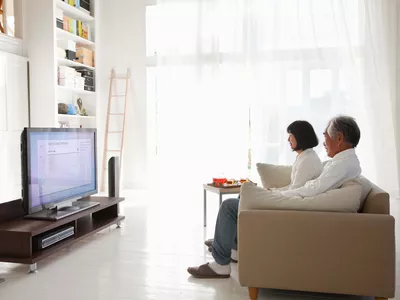
What are Location Permissions Life360 On Google Pixel Fold? | Dr.fone

What are Location Permissions Life360 On Google Pixel Fold?
Sometimes you need to decide whether you can share certain personal information or data about yourself with others, which may involve location permissions.
Location permissions Life360 allows you to share the location of your device with other apps, even if those apps aren’t in your app library. It’s usually a good idea to use location permissions sparingly, but sometimes you’ll need to use them.
Life360 uses location permissions for a few different reasons. For example, Life360 uses location permissions to show nearby friends when they check in to places so that you can see who is nearby and what they’re up to.
Part 1:What Does “Location Permissions Off” Mean on Life360?
There are two ways to prevent GPS tracking on the phone: switch off the phone’s GPS or take off Life360 rights to track your whereabouts using GPS.
It’s possible that Life360 won’t work properly if you don’t accept the permissions it requests during the installation process. When it comes to authorizing access to Life360, you have the following choices available to you:
If you choose the ‘never option’, the application will not be granted the required rights. As a result, the software may fail to perform as it is meant to. Whether you’re unclear if you want to offer the program complete access or not, this is the ideal ‘Ask any time’ decision to bring.
Your location may be granted every time the app is used if you wish. ‘While the App’ setting permits accessibility to Location Services only when the app itself or one of its functionalities is currently displayed on the screen.
Your device’s status bar may glow blue and display a message notifying you that an application is currently using your location data if the While Using the App setting is enabled for one of your apps.
“Always” grants the software all the permissions it needs. So, for example, allowing location permission will be done – every time the app launches. As a result, the software can track your location even if the application is closed.
Part 2:Can My Google Pixel Fold Be Tracked If Location Services Are Off?
If you misplace your phone or want to run an application that requires to access your location, you may use the already developed location settings on your smartphone. Suppose, on the other hand; you don’t want anybody to track your phone?
Is it possible to track a phone even if the location services are disabled? Mobile phones can be tracked even when location services are off, and the answer to that question is, “Yes.”
Disabling your phone’s location services might help you hide your current whereabouts. This is critical if you don’t want others to be able to follow your movements or activities. However, other methods may still find a smartphone’s overall geolocation using different ways.
1. Cell-Site Simulators
A cell-site simulator is a device that can imitate a mobile phone tower and force a nearby mobile phone to connect to it. Cell site simulators can be purchased online or at a local electronics store. Law enforcement agencies use them to locate a phone without a warrant.
2. Malware or Spyware
Malware and spyware can use various techniques to track your phone’s location. For example, a malware program may be able to detect your location based on Your Google Pixel Fold’s hardware.
Some mobile malware or spyware can detect and track your location without the need for the user’s consent.
3. Cell Towers
Cell towers can provide a rough estimate of a phone’s location. A cell tower is a network access point that connects a mobile phone to the Internet. A smartphone’s location can be found by triangulating the position of cell towers near your device. This method works best when the cell towers are close together.
4. Wi-Fi Snooping
When a Wi-Fi hotspot is nearby, your phone can connect to it without needing to connect to a cell tower. Your phone can then transmit the signal back to the hotspot, which will record the Google Pixel Fold device’s IP address.
Part 3:How Do I Pause Life360 without My Parents Knowing?
There are many ways to ensure your parents do not know where you are and what you are doing. Some of these methods are:
1. Switch to the Airplane Mode
Turning on Airplane Mode on your smartphone is another fast approach to preventing Life360 from broadcasting your whereabouts without your parents being aware. Unfortunately, you’ll be unable to use your phone’s internet connection after setting off Airplane Mode, so you’ll lose your GPS position.
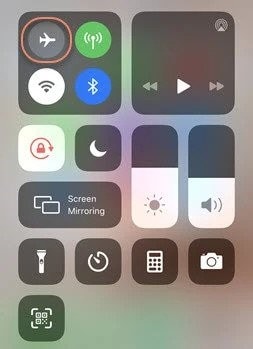
2. Make Sure to Turn Off Circle’s Location Sharing
It’s your choice whether or not you want to share your location information with others in a particular circle or detach from a circle.
- Access the Life360 app’s settings by tapping Settings in the upper right-hand corner.
- When you’re done monitoring your position, choose a circle on the UI to do so.
To disable the function, choose the Location Sharing menu item and then drag the flip to the off setting.
- Go to your phone’s settings and look for “Location Sharing Paused.”

3. Stop Using the GPS on Your Device
Stopping location sharing on Life360 may also be accomplished by turning off the GPS service, another viable alternative.
* For Android Users
- Launch the Settings app on your Google Pixel Fold, then scroll down until you find “Privacy” and tap it.
- To prevent applications from monitoring your location, uncheck the “Location” option.

* For iPhone Users
- Navigate to the Settings menu on your iPhone.
- To disable this feature, enter the “Location Services” menu by selecting the “Personal” tab and selecting the appropriate option.

4. Take use of a Burner Phone
Burner phones make it very easy to disable location tracking on Life360. In addition, disposing of a burner phone keeps your personal information private and secure.
- Install Life360 on the burner phone, and then login in using the same account you used on your primary device.
- Establish a connection between your phone and the free Wi-Fi that is accessible.
- If you delete this application from your smartphone, your parents will no longer be able to monitor your phone use.
5. Trust Dr.fone
Smartphones have taken over the globe, and almost everyone has one. In addition, apps for smartphones, such as those for monitoring children, have been developed as a result of advances in technology. Using programs like Life360, parents can keep tabs on their children and teens. However, for some children and teenagers, Life360 disturbs their privacy, and they don’t enjoy being tracked around the clock by the program.
It may be difficult to trick the iPhone’s GPS, and doing so needs dependable and secure solutions, such as Dr.Fone - Virtual Location (iOS/Android) . Users of iOS devices will appreciate this app’s ability to quickly and safely fake their current location without compromising their personal information. The most excellent part is that it’s simple to use and set up. Additionally, with Dr.Fone - Virtual Location (iOS/Android), you may relocate to any location and choose your own pace. Life360 and other location-based applications may be spoofed with a mouse click.
Dr.Fone - Virtual Location
1-Click Location Changer for both iOS and Android
- Teleport from one location to another across the world from the comfort of your home.
- With just a few selections on your computer, you can make members of your circle believe you’re anywhere you want.
- Stimulate and imitate movement and set the speed and stops you take along the way.
- Compatible with both iOS and Android systems.
- Work with location-based apps, like Pokemon Go , Snapchat , Instagram , Facebook , etc.
3981454 people have downloaded it
It’s pretty simple to use Dr.Fone, and here are the instructions.
- Step 1: Once you’ve downloaded Dr.fone from the official site, you’ll need to install it on your computer or system.

- Step 2: Install it and then run it. As soon as you’ve plugged in your iOS device, press the “start” icon.
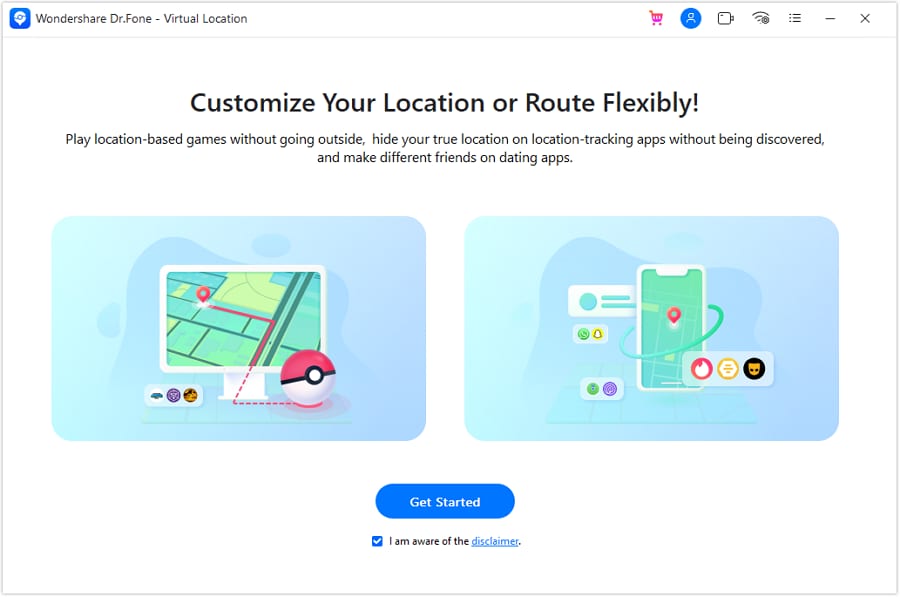
- Step 3: You’ll now be able to view your present position on a map. Use the map’s teleport feature in the upper right corner to look for a particular spot.
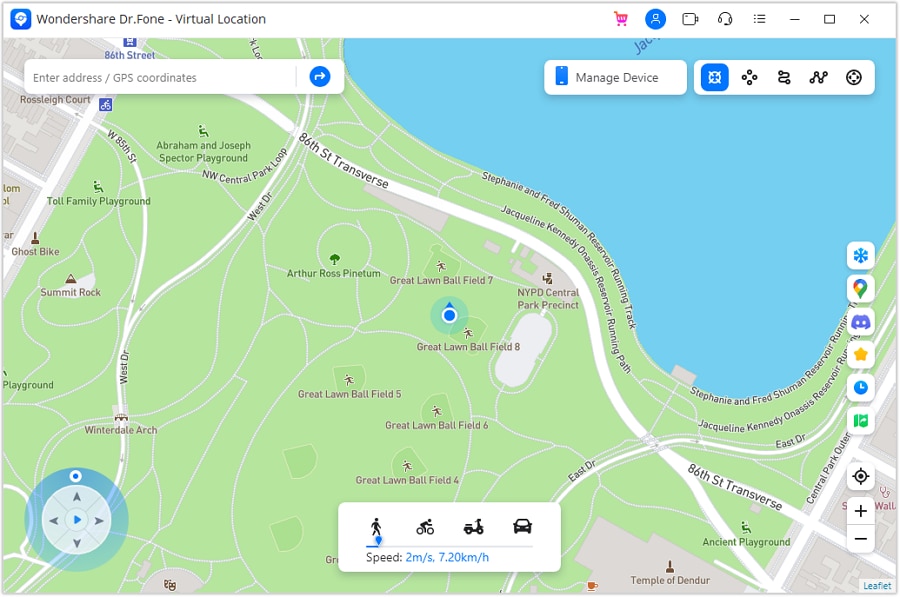
- Step 4: To relocate to a new place, do a scan and then hit the “move here” option.
- Step 5: Finally, Your spoofing skills have been fully unlocked!
Conclusion
Life360 is a handy app, but it can be frustrating when a child or teen doesn’t want to use it. It’s easy to fool the app and trick it into thinking that you’re at home or school, but you’re not. Hence, Dr.Fone - Virtual Location (iOS/Android) is an excellent app for faking your location and keeping your personal information safe.
What is Geo-Blocking and How to Bypass it On Google Pixel Fold?
Have you ever entered a website and can’t access it because it is unavailable in your area? This is what geo-blocking means. If you want to know more about geo-blocking, you have come to the right article. This article provides the definition, symbols, function, type, and how to bypass a geo-blocked site.
Encryption is often used in geo-blocking as a means of protecting material that is restricted to users in just certain locations. In its long existence, the method has been met with several obstacles. These obstacles will be discussed in the next sections!

Part 1. What is Geo-Blocking?
This section will give you the definition of geo-blocking. It will also show how websites inform viewers that they are in geo-blocking areas.
Definition of Geo-Blocking
Geo-blocking is the practice of restricting online access to certain users depending on where in the world they happen to be physically located. Telecommunications firms, websites, and other content providers and intellectual property owners often use this method for copyright protection. To monitor and enforce geo-blocks, databases that map out IP addresses’ geographical locations are often employed.
Understanding the Main Symbols and Elements
You sometimes can’t access a site because it isn’t available in your area. This is the main element carried by geo-blocking.
Every online-surfing tool has a unique identifier called “IP address”. The address can identify the Google Pixel Fold devices’ geographical location. When users access a website, their devices send their IP addresses to the online servers. The servers read if the IP addresses are included in the allowed list and determine whether to allow the visitors to view the content.
The visitors usually know they are geographically limited through the website’s displayed outcomes, a poster indicating that the service is unavailable in the location. Take the geo-banned access by Airbnb as an example below.
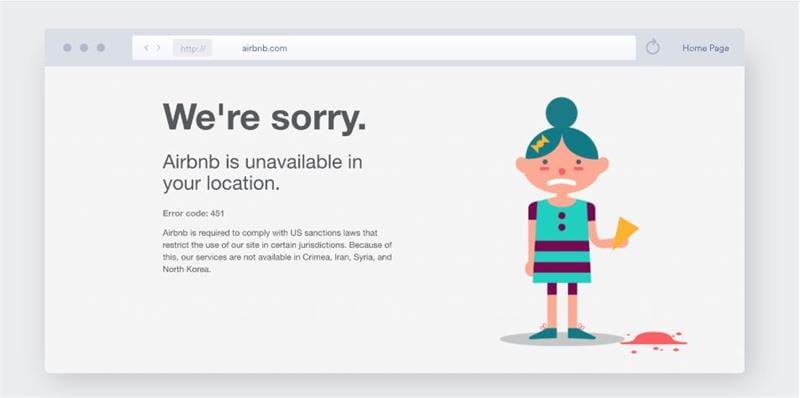
Although Airbnb has been criticized for posing a threat to the availability of low-cost lodging in metropolitan areas, it has proven to be a useful resource for travelers. However, not everyone can use it; for instance, it is unavailable in Iran due to US sanctions.
Part 2. How Does Geo-Blocking Work?
When a firm, rather than a government, is responsible for geoblocking, IP addresses are often the first line of defense. Your IP address is like a street address, revealing where you live.
IP addresses are numerical identifiers that distinguish each machine on the internet. Your computer’s IP address is sent to the server of the website you visit so that it may supply the required data.
You’ll be assigned an IP address when you sign up for an Internet Service Provider. It is possible to pinpoint the location of your device using its IP address, albeit the degree of precision may vary. Websites use the IP address to determine whether you can read their content. They will thus refuse your request if you are using an IP address that’s not on their approved list.
Part 3. Common Types of Geo-blocked Content
The difficulty stems from legal hurdles, including copyrights, licenses, and territorial disputes. Certain streaming services may not make all of their offerings accessible in all regions, or a major online shop may restrict some of their offerings to customers in just one geographic area.
Youtube
Users who upload videos can restrict access to them in certain countries. This nearly usually indicates that a business has chosen that you shouldn’t be able to see a video because of where you are located.

Spotify
You may be trying to find a method to unblock Spotify because you want to listen to unavailable music in your country or because the app has been prohibited in your area.

Live Sports
Big events may be aired exclusively by one company, which means you may be forced to pay to access certain material or go through annoying subscription hoops.

Pandora
Do you want to tune in to this online radio and music station? You can’t access it anywhere in Europe because of a regional firewall.

Porn sites
Artists from porn sites can now geo-block their movies, much like YouTube users do. Some porn sites have been outlawed in several countries, including Egypt and Pakistan, where the vast majority of the population resides.

Amazon
Amazon Prime geo-blocks other services as well as its streaming content. Games, ebooks, software, audiobooks, and other digital materials like TV and movies may be licensed and copyrighted. Amazon Prime prevents certain VPN IPs from accessing foreign content, including Netflix.
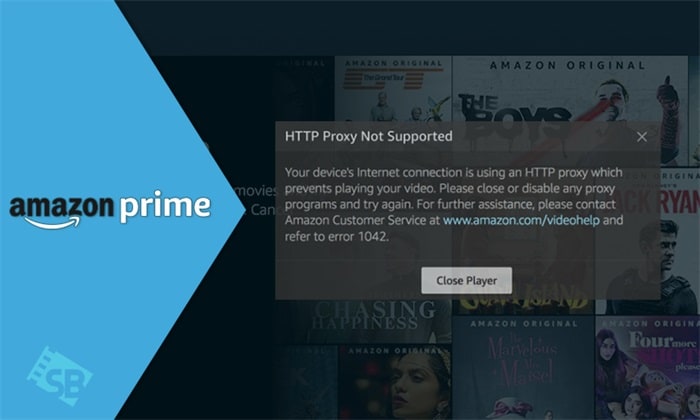
Part 4. Tips to Bypass Geo-Blocking
While certain sites may be blocked in your country, there are still methods to access the full functionality of the web. What exactly are they, and how do you go about getting them? Here’s more reading material.
Method 1. Use Smart Domain Name System (DNS)
Clever DNS can evade geoblocking if your smart TV, streaming box, or gaming console doesn’t support VPNs or proxy servers. Some home routers can generate VPN connections, but not all.
By changing your DNS address, clever DNS may alter your device’s virtual location. Smart DNS replaces your Internet provider’s DNS server. Netflix.com’s IP is not netflix.com. You’ll acquire the smart DNS provider’s transparent DNS proxy IP. Netflix thinks you’re in the US since this proxy server is.
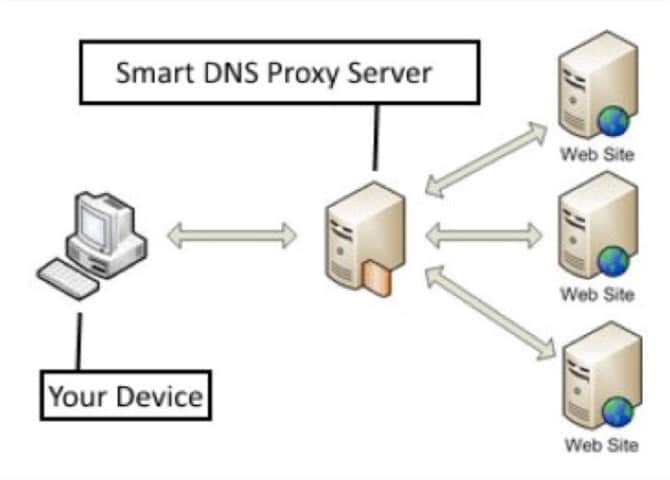
Method 2. Connect to Proxy Servers
Rather than connecting you directly to the server housing the material you want, a proxy server functions as an intermediary. A proxy server does what its name implies: it acts on your behalf to get access to the data and then forwards it to you. Proxy servers, especially those in foreign countries, may be used to get around geographical restrictions.
Depending on the kind of proxy server you use, you may or may not be able to conceal your IP address when surfing the web. Proxy servers are available online and may be accessed from any web browser. Setting up a proxy server is easy, but your activity may still be vulnerable since proxies don’t secure your data.
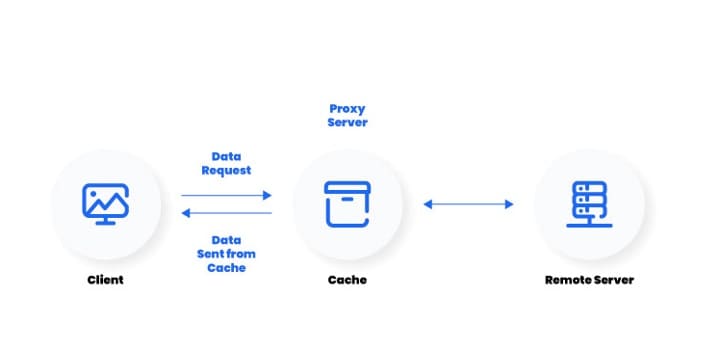
Method 3. Use the Tor Browser
In addition to using a VPN, you may use the anonymous Tor browser. The Tor browser links to the Tor network, a collection of computers that collaborate to conceal your online footprint by relaying your traffic via several intermediary nodes.
Tor employs a technique called “onion routing” to conceal its users’ identities. Since more time is required to traverse these additional levels, your internet speed may suffer as a consequence.
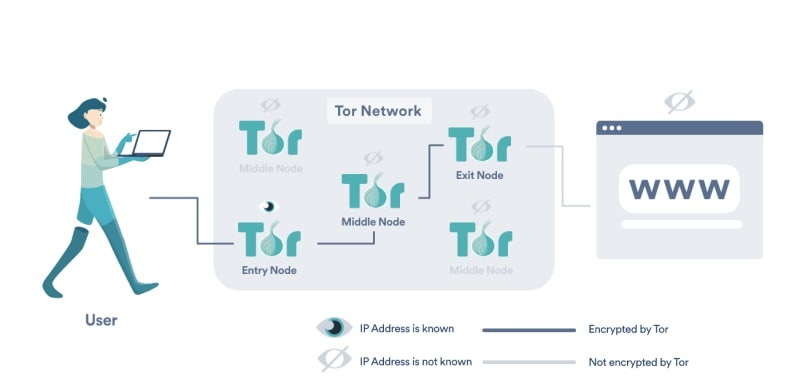
A virtual private network (VPN) may hide your online identity and protect your data by encrypting your connection. VPNs allow you to get around geographically restricted material by redirecting your connection via a server in another country. This will allow you to connect to VPN servers in other countries, such as the United States, the United Kingdom, or Australia.
With effective VPN tools , you can surf the web anonymously, unblock geo-blocked content, and watch your favorite programs abroad. There are several advantages to utilizing a VPN, particularly when you travel or use public Wi-Fi, and they are simple to set up.
Part 5. FAQs About Geo-Blocking
Here are the answers to four questions that you might ask about geo-blocking.
1. Is Geo-Blocking Legal?
Yes. It’s legitimate. Limiting access to websites and services based on a user’s location is lawful. This practice is routinely used in nations like China to prevent citizens from seeing politically sensitive material. Legal arrangements, such as licensing agreements, may also be enforced by geo-blocking.
2. Is Bypassing Geo Blocking Illegal?
It depends. Depending on the situation, the nation, the purpose of the use, and the technique used, geo-blocking circumvention may be against the law. Copyright regulations prohibit users from accessing material beyond its designated location, yet many providers are reluctant to penalize users for doing so.
3. What’s the Difference Between Geo-Fencing and Geo-Blocking?
Geo-fencing is to create digital fences on which to base real-world judgments about where to go. One may draw a boundary around it using longitude and latitude lines on a map to easily establish who is permitted inside a certain region. Restricting access to material based on a user’s physical location is called “geo-blocking.”
4. Is Geo-Restricted the Same as Geo-Blocking?
They are the same. Restricting a user’s ability to access certain online resources depending on their location is known as geo-blocking or geo-restriction. To safeguard their license agreements, foreign media streaming firms often use the practice of geo-blocking.
Conclusion
For several reasons, media and content producers use geo-blocking. Although geo-blocking is unlikely to ever go out of style, there are techniques to circumvent it. Use a virtual private network (VPN) to bypass geo-restrictions on the material you want to watch. Using a Virtual Private Network (VPN), a proxy server, the Tor network, etc., your online location may be hidden or masked.
Geo-blocking controls. It’s both useful and abused. Website banning discriminates and manipulates. Geography may be annoying and frustrating. Sadly, they may always be in style. You don’t have to tolerate them!
Life360 Circle: Everything You Need to Know On Google Pixel Fold
In order to keep in touch with the persons that matter most to you, you may use circles to create private groups. There are a lot of different situations in which the Circle is useful. Please make sure everything is where it should be. Since Check-Ins, Location Sharing, and Messaging are all exclusive to each Circle, no one who does not need to view a particular piece of information will. You’ve got the upper hand here. You have complete control over who is and isn’t included in your Circle. Privacy is something we take very seriously.
Paying for a Life360 package gives you access to all the Circles. To ensure that everyone in your Circle is able to take advantage of the perks that come with a Life360 Membership, each paid plan for Life360 includes all members in your Circle.
Part 1: What Is Life360 Circle?
Life360 is a family safety service that offers a variety of services. Its primary focus is to enable families to communicate and stay in touch with each other.
For parents who want to monitor their children from a distance, Life360 is a valuable tool. It is a mapping system that allows your family members to know exactly where you or anybody else in the Family Circle, where Life 360 circle is located at any specified instant, regardless of whether they are in your house or elsewhere.
Since the technology was introduced in 2014, we can safely say that it is no longer considered revolutionary. But, aside from that, some people want to know more than simply where they are, such as how fast they’re going when driving.
Part 2: How Life360 Circle Works?
Life360 has been hailed as an essential tool when it comes to parents and careers. With the help of the Life360 Circle function, the mobile application will track your current position in a ring. Those inside that zone may gain insights about where their kid is heading and track any incoming calls or texts from those who may be concerned about their well-being.
As an added feature, the people concerned may determine whether automatic warnings would appear when someone gets to his location without monitoring him further than only displaying where he paused.
The app will notify you as soon as your beloved person comes or departs from a designated place. You may monitor their speed and position as they drive. In addition, the platform makes it simple to give them instructions by just pressing on their image with life360 circle names.
Part 3: What Is The Meaning Of Circle Colors In Life360?
Using the app, you may have observed colorful circles/bubbles. In addition, Life360 tells you about different issues depending on the Circle’s color. The app’s primary colors are purple, orange, and green.
It’s important to know what each color symbolizes before establishing its function. For example, what does the green dot on life360 mean? Members with green rings are more visible. The green dot shows whether driver monitoring is turned on. These also show where everyone in the group is and what they’ve been up to.
The purple Circle shows a Bluetooth-connected gadget. You may check a member’s recent location history using purple dots in the app. For example, to open Day Breakdown, click the purple dots.
The orange Circle denotes a criminal complaint. Instead of a recent crime location, this is a warning that a family member may be in a crime hotspot.
Part 4: What happens when you join a Circle on Life360?
As soon as you’ve set up your Circle, no one else will be on it. Select “Add a New Member” from the drop-down menu at the bottom of the page, and then forward the recipient a text or email with an invitation key. It will provide instructions to help them acquire the app and join your Circle.
After downloading the app, you’ll receive an alert that they have joined your Circle. You’ll be able to monitor their activities from then on.
Part 5: How to Fake Your Circle Location on Life360
Dr.Fone - Virtual Location
1-Click Location Changer for both iOS and Android
- Teleport from one location to another across the world from the comfort of your home.
- With just a few selections on your computer, you can make members of your circle believe you’re anywhere you want.
- Stimulate and imitate movement and set the speed and stops you take along the way.
- Compatible with both iOS and Android systems.
- Work with location-based apps, like Pokemon Go , Snapchat , Instagram , Facebook , etc.
3981454 people have downloaded it
Dr.Fone - Virtual Location is the finest choice for learning how to fool Life360 on iOS (iOS). Changing your iOS location while protecting your privacy is easy with this app.
With simply the push of a button, the Dr.Fone - Virtual Location location switcher software may let you fool others into thinking they are in a different place than you really are. iOS and Android users can get it. A virtual private network (VPN) may also be used for location faking. However, any place will be able to tell whether you’re using a location spoofer since it’s so obvious. That’s why this program has so many special features.
The gadget is entirely safe to use and has a superb record for doing its job well. As a result, you shouldn’t obsess about your performance or your level of achievement. Step-by- Here are the step instructions for faking your location with Dr.Fone – Virtual Location (iOS).
Step 1: Download and install Dr.Fone – Virtual Location on your computer.

Step 2: Now would be an excellent time to take your iPhone and connect it to the pc. Upon successful connection, press the “Get Started” icon.

Step 3: Following that, you’ll see an area map. You’ll be able to know where you are right now if you use this feature. The “Center On” symbol may be found in the bottom right of the screen if the location isn’t appropriately shown.

Step 4: The three life360 symbols at the upper right of the screen are visible. Activating the Teleport Mode requires you to tap on the third icon. Click “Go” when ready to go to your desired location.
 SwifDoo PDF Perpetual (2-PC) Free upgrade. No monthly fees ever.
SwifDoo PDF Perpetual (2-PC) Free upgrade. No monthly fees ever.
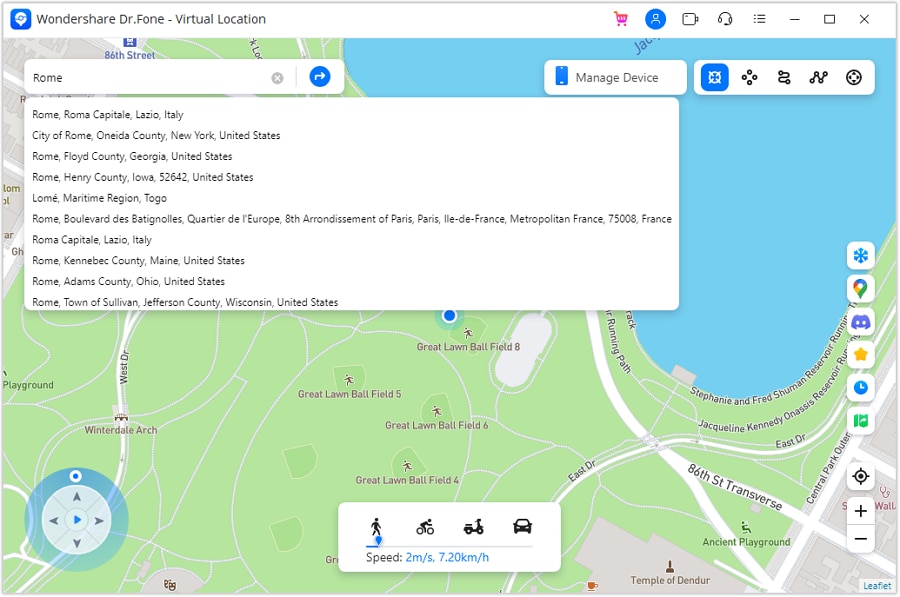
Step 5: When you input a new location, the application monitors and assesses it. A new box will immediately emerge at the location where the distance is specified. Choosing “Move Here” will cause your current location to be updated to reflect the new place you’ve picked.
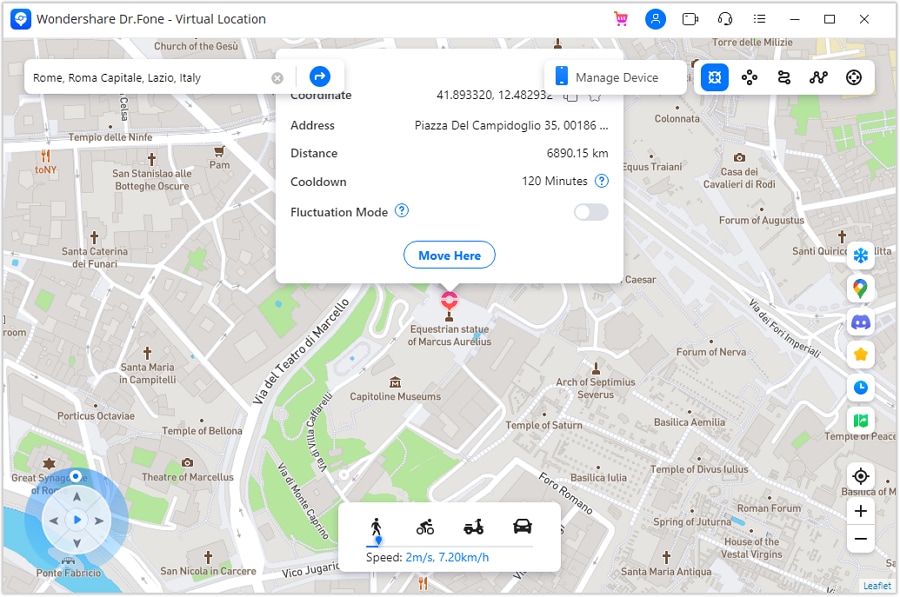
Part 6: How to Delete/Leave a Life360 Circle?
Getting rid of a Circle is a cinch! To begin, you need to:
- Log in as an Admin account and exclude everyone from the Circle.
- After everyone else in the Circle has departed, the person who is now in the center should also exit the Circle.
- It will be removed when nobody remains in the Circle since there is no use in having it otherwise.
Conclusion
Life360 has become one of the most popular applications on the App Store. It’s designed to help people stay connected with friends and family. However, if you’re interested in learning how to fake your location on Life360, we recommend using Dr.Fone - Virtual Location . It’s a more safe and effective way to get around the restrictions that Life360 puts in place.
- Title: What are Location Permissions Life360 On Google Pixel Fold? | Dr.fone
- Author: Ava
- Created at : 2024-08-01 21:31:28
- Updated at : 2024-08-02 21:31:28
- Link: https://fake-location.techidaily.com/what-are-location-permissions-life360-on-google-pixel-fold-drfone-by-drfone-virtual-android/
- License: This work is licensed under CC BY-NC-SA 4.0.








 CollageIt Pro
CollageIt Pro

 vMix 4K - Software based live production. vMix 4K includes everything in vMix HD plus 4K support, PTZ control, External/Fullscreen output, 4 Virtual Outputs, 1 Replay, 4 vMix Call, and 2 Recorders.
vMix 4K - Software based live production. vMix 4K includes everything in vMix HD plus 4K support, PTZ control, External/Fullscreen output, 4 Virtual Outputs, 1 Replay, 4 vMix Call, and 2 Recorders.
 Forex Robotron Gold Package
Forex Robotron Gold Package EaseText Audio to Text Converter for Windows (Personal Edition) - An intelligent tool to transcribe & convert audio to text freely
EaseText Audio to Text Converter for Windows (Personal Edition) - An intelligent tool to transcribe & convert audio to text freely  Jet Profiler for MySQL, Enterprise Version: Jet Profiler for MySQL is real-time query performance and diagnostics tool for the MySQL database server. Its detailed query information, graphical interface and ease of use makes this a great tool for finding performance bottlenecks in your MySQL databases.
Jet Profiler for MySQL, Enterprise Version: Jet Profiler for MySQL is real-time query performance and diagnostics tool for the MySQL database server. Its detailed query information, graphical interface and ease of use makes this a great tool for finding performance bottlenecks in your MySQL databases. 